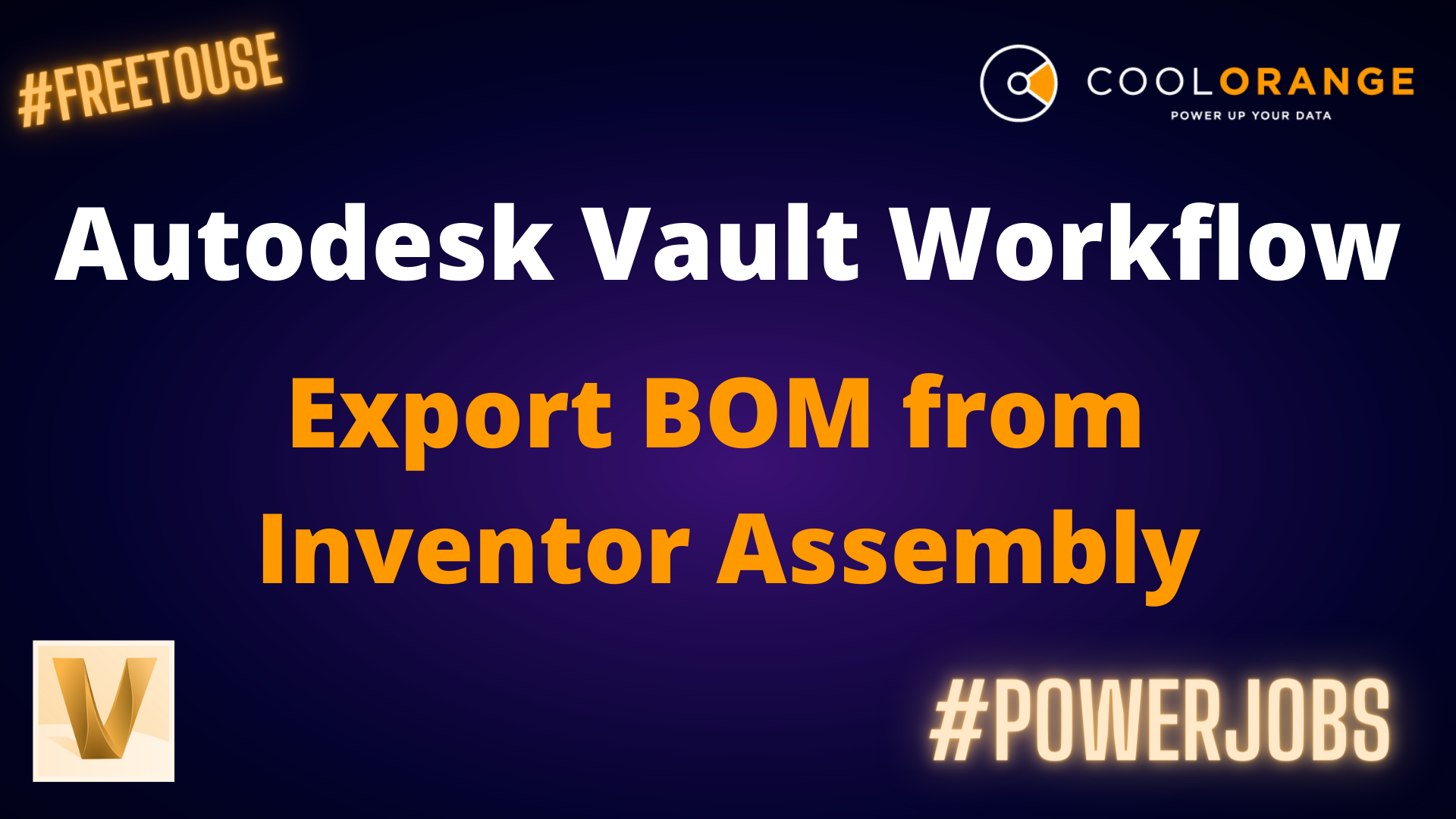Vault Best Practices
Data Synchronization between Vault & ERP: A Design to Production Story - Part II
.gif?width=464&height=580&name=Virtual(1).gif)
When you think about the data transfer features of Autodesk Vault, sure it has a few built-in elements that allows for the import and export of items & BOMs to and from the Vault item master. However, the process is entirely manual, and we have extensively discussed about the consequences of it in our previous posts. In this part-II of the design-to-production story, we will introduce the first solution that is readily available to automate this process.
Data Synchronization - The BOM Push solution
This export and import process occur at different times, so the data is only available when a write/read cycle is complete, which could be a fixed regular interval. Since this data is redundant between the two systems, it needs to be updates regularly. This requires the use of Item Master within Vault Professional, so that item data can be created and updated independently from CAD files. This type of integration is usually done with Autodesk Vault Job Processor, which can process jobs based on a specific event or at a specific interval.
For this task, there is no default Vault Jobs available but a custom job can be created using powerJobs. The push (write) of items from Vault towards ERP, can be triggered by the process of releasing Vault items. Alternatively, it is also possible to trigger this custom job on events/actions like ‘item creation’ or ‘item change’, but since the ERP system does not read the data immediately, the extra effort may not be worthwhile. Rather, the pull (read) of items to the ERP system, can be scheduled at required time periods.
Vault writes whenever appropriate and the ERP reads whenever convenient.
In the previous blog post, we had mentioned three questions that can impact the complexity of this item exchange process. It should also be noted that, the answers are subjective to different solutions. For this Data Synchronization (BOM Push) solutions, let’s take a look at what these answers might be.
-
Who creates the item?
In the context of automating item transfer between Vault and ERP, the question of item creation involves a dual perspective. Both the Vault and ERP systems possess the capacity to initiate the generation of items, however, the establishment of specific guidelines is pivotal to avert potential conflicts. A fundamental rule dictates that the item or part number must retain its uniqueness across all interconnected systems. To achieve this objective, two strategic approaches can be adopted: Firstly, all item numbers can be generated exclusively by a single system, be it the Product Data Management (PDM) or ERP system, for both purchased and produced items. Alternatively, different numbering schemes can be implemented, differentiating the item numbers created in Vault from those forged within the ERP system. While the harmonization of item data across systems facilitates integration, this very process engenders data redundancy due to the necessity of sharing each item with both systems. -
Who generates the item number?
The determination of the entity responsible for generating item numbers assumes significance, particularly within a scenario where one system takes the lead. For instance, if the ERP system is designated as the sole generator of item numbers, a collaborative approach between designers and procurement personnel becomes essential. In this context, designers are compelled to collaborate with the purchasing department to secure new part numbers, and conversely, procurement may necessitate input from designers. Alternatively, when distinct numbering schemes are introduced for items, both the Vault and ERP systems have the autonomy to independently create items. Subsequently, these systems can seamlessly initiate the transfer of their respective items to the counterpart system. -
Which properties are needed?
Delving into the realm of item properties, an emphasis is placed on attributes that hold universal relevance across systems. Such attributes predominantly encompass technical specifications encompassing facets like the unit of measure, weight, material dimensions, and other parameters that bear significance within both the Vault and ERP contexts. Furthermore, as an item transitions from Vault to the ERP system, the conveyance of additional mandatory properties specific to the ERP environment becomes imperative. These properties often entail default values. The harmonious transfer of these properties necessitates a high level of coordination with the respective ERP system and the purchasing department. Ensuring uniformity, accuracy, and adherence to established business protocols stands as a cornerstone in this aspect of the integration process.
If you wish to experiment with this option, please check out the powerJobs solutions and the corresponding custom job which exports the created/changed Vault items as an XML file to the common folder at given intervals.
.png?width=580&height=486&name=Add%20a%20subheading(5).png)
This solutions has its own pros and cons as shown in the above image. But luckily, all these disadvantages can be overcome by our unique world class solutions, powerGate. Next week, we shall discuss the powerGate solution which will be the final part of this Design-to-Production story.
Meanwhile, download a free trail version of powerJobs or you can also request a free demo from our experts. If you have any questions regarding the product or require some more specific information, please feel free to drop us a message at info@coolorange.com.




.png)
.jpg)